AP Bio Unit 7
1/76
Earn XP
Description and Tags
Name | Mastery | Learn | Test | Matching | Spaced |
|---|
No study sessions yet.
77 Terms
What is natural selection?
Organisms with adaptations best suited for the environment will have a higher chance at survival and reproduction over time
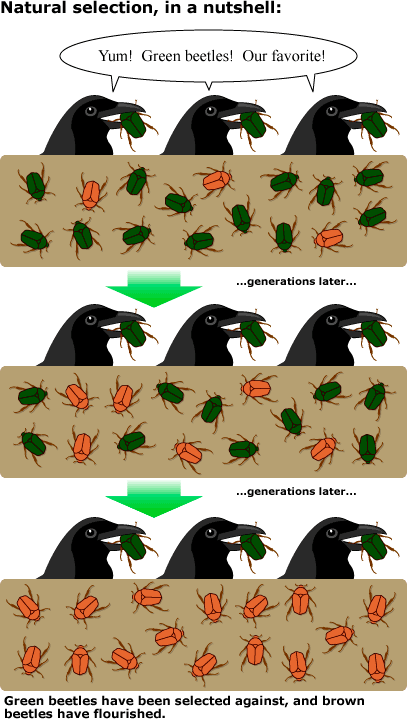
What influences natural selection?
Environmental stability, genetic variation, adaptations, and fitness
What does natural selection result in?
Evolution/an increase or decrease of certain phenotypes over generations
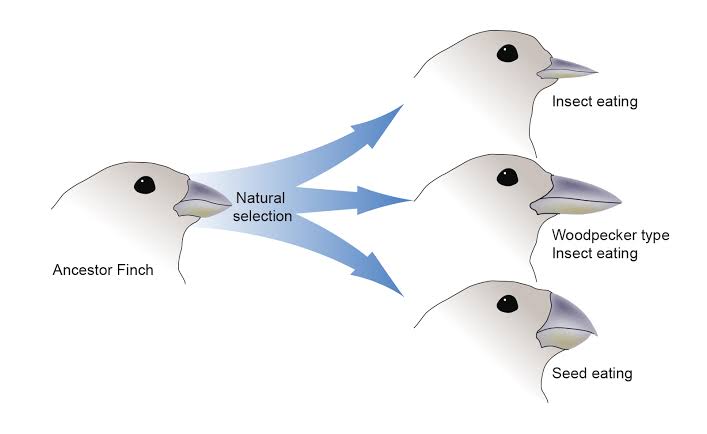
What is fitness?
The ability of an organism to survive and produce fertile viable offspring. Evolutionary fitness means reproductive success and heritability of adaptations had occurred.
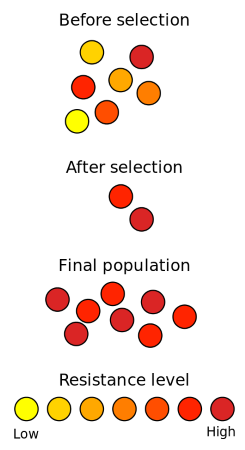
What is evolution?
The genetic makeup of a population over time driven by mutations
What are phenotypic variations?
The phenotypic differences between individuals in a population caused by genetic variation. The more variation in a population, the higher probability for surviving changing environmental conditions. This is because in natural selection, those with favorable phenotypes will have higher fitness and pass on those traits— increasing the fitness of the entire population.
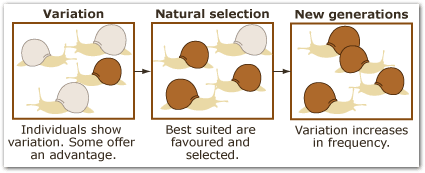
What are phenotypes?
The physical expression of a genotype
What are genotypes?
The combination of two alleles, which are a variation of a gene —> “a” is allele, “aa” is genotype
What are selective pressures?
Biotic and biotic factors that influence survivability → example: disease, climate, food availability
What is artificial selection?
Humans interfere by selectively choosing desirable traits → example: agricultural practices, dog breeding
What is convergent evolution?
Similar selective pressures in an environment select similar traits for different populations (living at the same area and time)/species (in general) over time → example: shark and whales
What is genetic drift?
A nonselective mechanism for evolution, especially for small populations. It is the random change in the frequency of an allele.
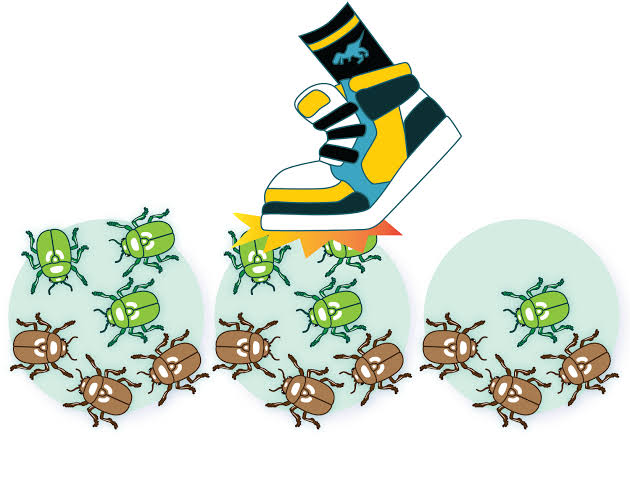
What is the bottleneck effect?
When a diverse population is suddenly reduced into a smaller one that does not represent the previous gene makeup.
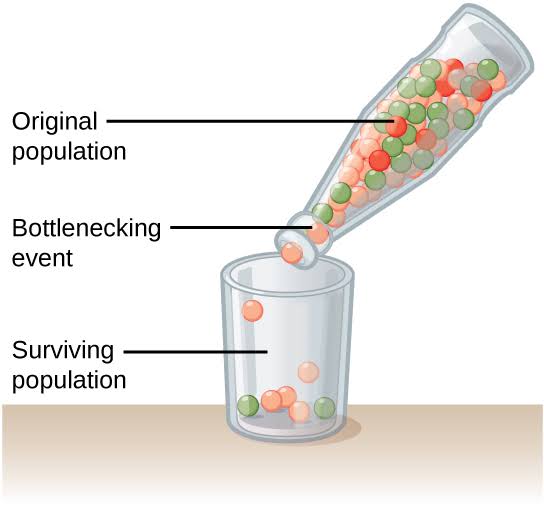
What is the founder effect?
When genetic variation is reduced within a small population because they were isolated from the larger population —> examples: migration, geological events
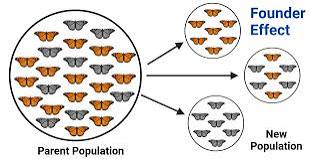
What is gene flow?
The exchange of alleles due to movement of individuals between populations
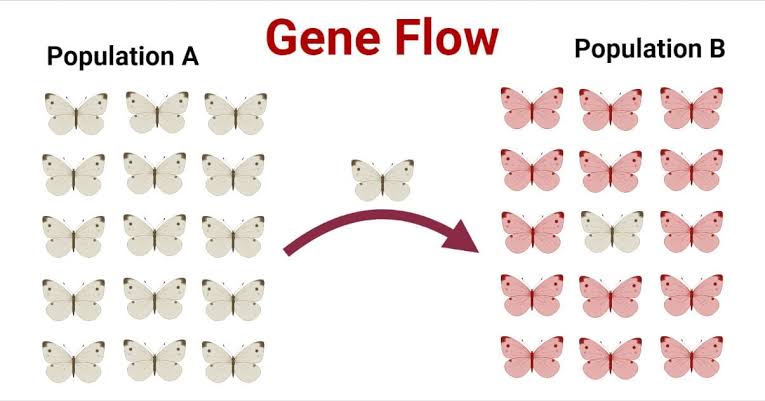
How is reproductive success measured?
With relative fitness (# of surviving offspring compared to # left by other in population)
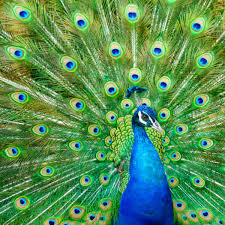
What is sexual selection?
The reason why species have traits that are unique/show off → example: male peacock feathers
What are the three modes of natural selection used the examine changes in the mean of phenotypes?
Directional: towards one extreme phenotype
Stabilizing: towards the mean, against both extreme phenotypes
Disruptive: against the mean, towards both extreme phenotypes
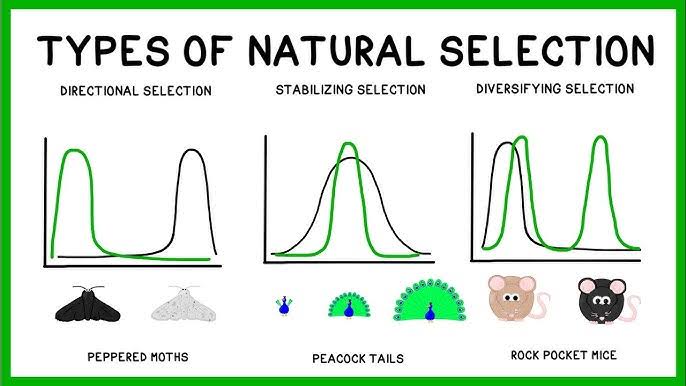
What is a null hypothesis?
Asserts that variables are uncorrelated, thus observations were because of chance → no significance difference in expected results vs actual results
What is an alternative hypothesis?
Asserts that variables are correlated, thus observations were because of an intentional cause → there is a significant difference in expected results versus actual results
What is Hardy Weinberg Equilibrium?
It determines what the genetic makeup of the population would be if it were not evolving at a particular locus point
What are the five conditions for Hardy Weinberg Equilibrium?
No mutations
Random mating
No natural selection
Large population size
No gene flow
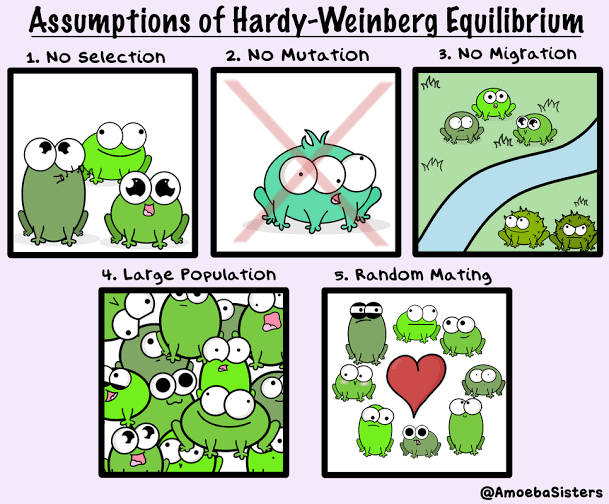
What are evidences of evolution?
Fossil record
Comparative morphology
Biogeography
What is comparative morphology?
The analysis of the structures of living and extinct organisms
What is homology?
Characteristics in related species that have similarities even if the functions differ
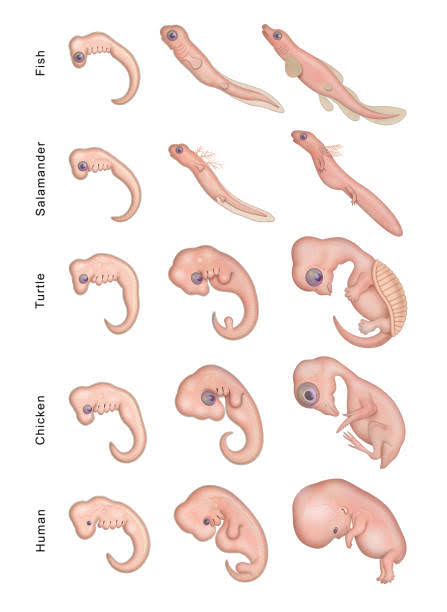
What is embryonic homology?
Many species have similar embryonic development
What are vestigial structures?
Structures that are conserved even when nonfunctional → example: tailbone in humans
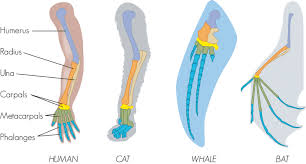
What are homologous structures?
Characteristics that are similar in two species because of a common ancestor
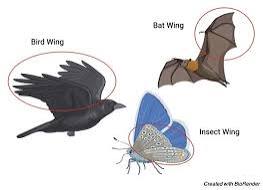
What are analogous structures?
Characteristics that are similar but have separate evolutionary origins —> example: wings in birds vs bats or bees
Structural evidence of common ancestry?
Membrane-bound organelles
Introns in genes
Linear chromosomes
What is biogeography?
The distribution of animals and plants geographically
What are phylogenetic trees?
Diagrams that represent the evolutionary history of a group of organisms, similar to cladograms
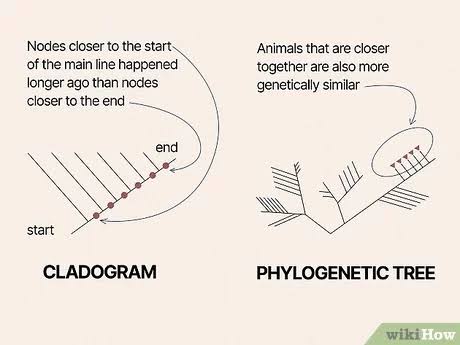
Features of a cladogram
Line = lineage
Branching point = node that represents common ancestors
Root = the common ancestor
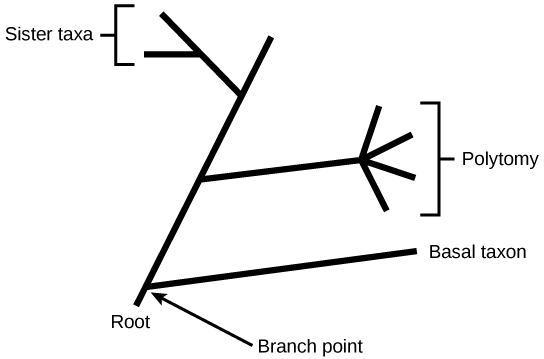
What is a sister taxa?
Two clades that emerge from the same node
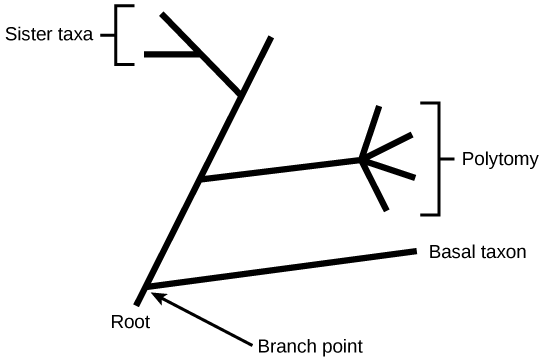
What is the basal taxon?
A lineage that evolved from the root and remains unbranched
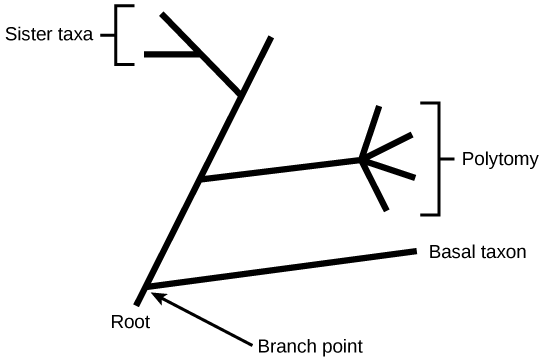
What is synapomorphy?
A derived character shared by clade members
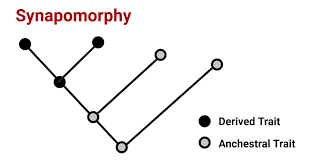
What are derived characteristics?
Similarly inherited from the most recent common ancestor
What are ancestral characteristics?
Similarities that arose prior to the common ancestor
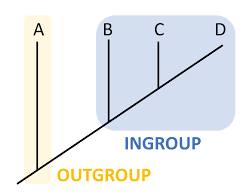
What is an outgroup in a cladogram?
A lineage that is the least closely related to the rest of the organisms
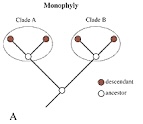
What is a monophyletic group?
A group that includes the most recent common ancestor and all its descendants
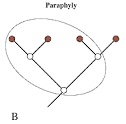
What is a paraphyletic group?
A group that includes the most common ancestor, but not all its descendants
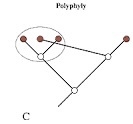
What is a polyphyletic group?
A group that does not include the most recent common ancestor of all members
When to use the principle of parsimony?
When there are any conflicts among characters, favor simplicity in explanations
What is speciation?
The formation of a new species that is able to interbreed and produce viable, fertile offspring
What are the two modes of speciation?
Allopatric and sympatric
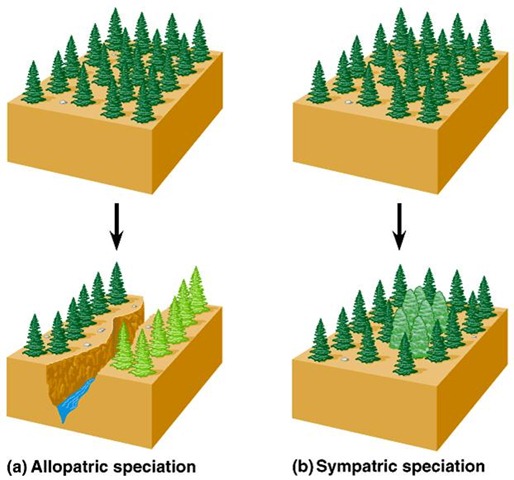
What is allopatric?
A physical barrier (or simply a smaller population being separated from the main group) that geographically isolates populations, which prevents gene flow → example: natural disasters
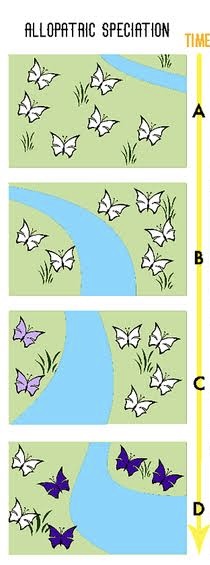
What is sympatric?
Speciation occurring while still inhabiting the same geographic region as the ancestral species, usually because of the exploding a new niche
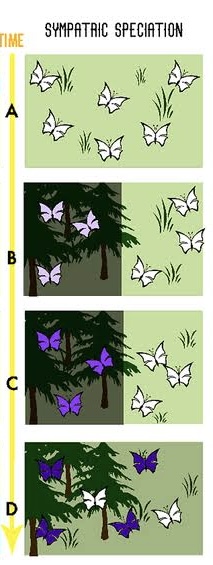
Why does speciation occur?
Reproductive isolation
What are the two types of reproductive isolation?
Prezygotic barriers
Postzygotic barriers
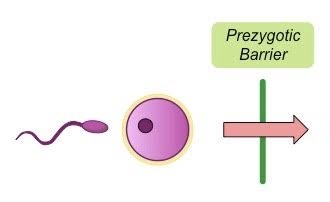
What are the five types of prezygotic barriers?
Definition: prevent mating/hinder fertilization
Habitat
Temporal
Behavioral
Mechanical
Gametic

What is habitat isolation?
When species live in different areas/occupy different habitats within the same area → example: birds living at high and low elevations
What is temporal isolation?
When species breed at different times (day,season,year) → example: skunks
What is behavioral isolation?
When unique behavioral pattern and rituals separate species → blue footed boobies
What is mechanical isolation?
When the reproductive anatomy does not fit with that of another species → example: varying snail shell spirals
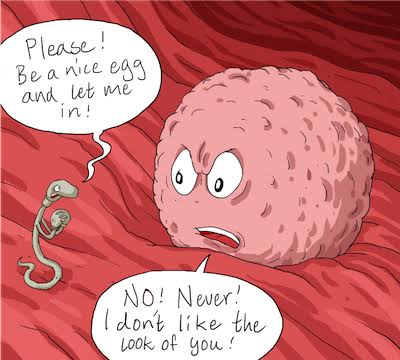
What is gametic isolation?
When proteins on the surface of gametes prevent the egg and sperm from fusing → example: sea urchins
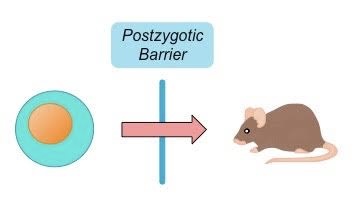
What are the three types of postzygotic barriers?
Definition: the prevention of a hybrid zygote from developing into a viable, fertile adult
Reduced hybrid viability
Reduced hybrid fertility
Hybrid breakdown

What is reduced hybrid viability?
When the genes of different parents species interact in ways that impair the hybrids development/survival —> example: hybrid embryo of domestic sheep and goats die early on
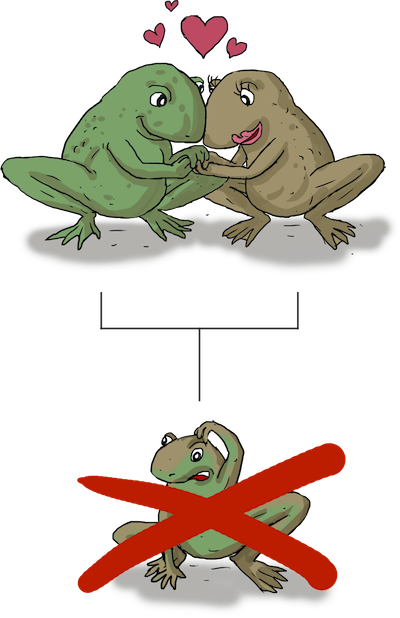
What is reduced hybrid fertility?
When a hybrid can develop into a healthy adult, but it is sterile —> example: mules
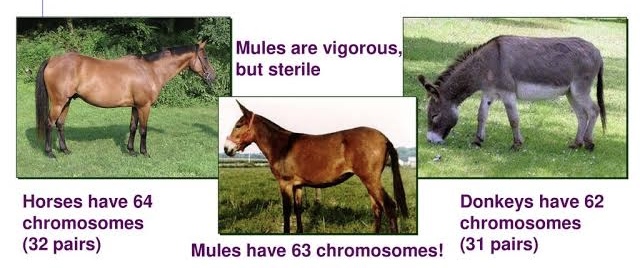
What is hybrid breakdown?
When the hybrid of the first generation may be fertile, but when they mate with a parent species or one another, their offspring will be sterile —> example: after first generation of crossing types of cotton plants, they do not produce viable seeds
What is microevolution?
Change in allele frequencies within a single species or population (natural & sexual selection, genetic drift, gene flow)
What is macroevolution?
Large evolutionary patterns (mass extinction, adaptive radiation)
What is statis?
When there is no change over long periods of time
What is divergent evolution?
Groups with the same common ancestor evolve and accumulate differences resulting in the formation of a new species
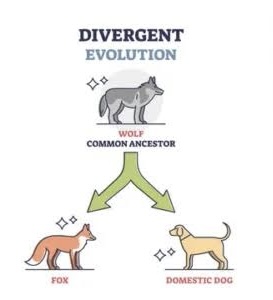
What is adaptive radiation?
If a new habitat or niche becomes available, species can diversify rapidly
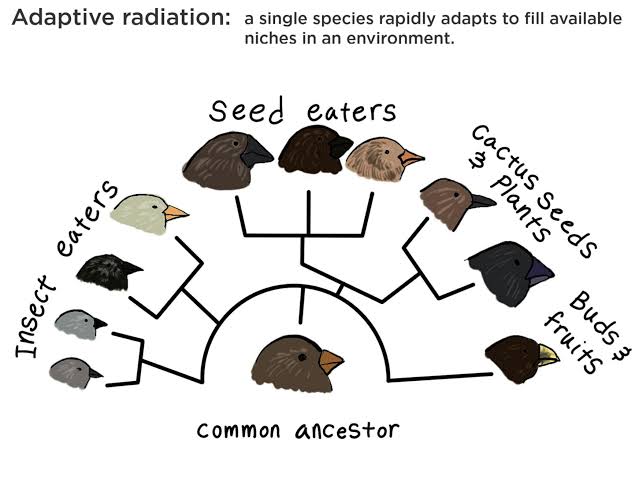
Another definition for convergent evolution?
When two different species develop similar traits despite having different ancestors (analogous traits)
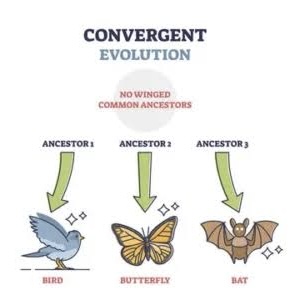
What is extinction?
The termination of a species
What is the equation that determines the frequency of genotypes/phenotypes of an individual in a population?
p²+2pq+q²=1
What is the equation that determines the frequency of certain alleles in a population?
p+q=1
What does “p” represent
The frequency of the dominant allele (A)
What does “q” represent?
The frequency of the recessive allele in a population (a)
What does “p²” represent?
The frequency of homozygous dominant individuals (AA)
What does “2pq” represent?
The frequency of heterozygous individuals (Aa)
What does “q²” represent?
The frequency of homozygous recessive individuals
Unit 5 recall: what is homozygous?
Pair of identical alleles (AA or aa)
Unit 5 recall: what is heterozygous?
Pair of different alleles for a gene (Aa)
Unit 5 recall: What is Mendelian genetics?
Law of segregation: two different versions of an allele for the same trait (from parents) segregate randomly into different gametes (offspring)
Law of independent assortment: genes for one trait are inherited separately from another trait
Unit 5 recall: what is recombination of alleles?
The process where alleles from different parents mix during meioses, resulting in genetic diversity in offspring